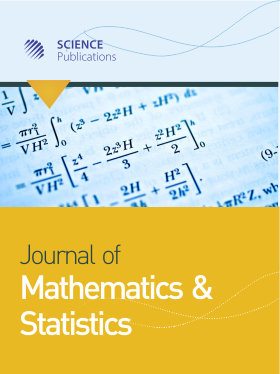Microwave Assisted Bioethanol Production from Sago Starch by Co-Culturing of Ragi Tapai and Saccharomyces Cerevisiae
Abstract
Problem statement: Environmental issues such as global warming and recent events throughout the world, including the shortage of petroleum crude oil, the sharp increase in the cost of oil and the political instability of some crude oil producing countries, have demonstrated the vulnerability of the present sources for liquid fuel. These situations have created great demand for ethanol from fermentation process as green fuel. A main challenge in producing the ethanol is the production cost. A rapid and economical single step fermentation process for reliable production of bioethanol was studied by co-culturing commercialized ragi tapai with Saccharomyces cerevisae using raw sago starch. Approach: Enzymatic hydrolysis of sago starch by various amylolytic enzymes was investigated to reveal the potential coupling mechanism of Microwave Irradiation-Enzyme Coupling Catalysis (MIECC). Results: It was shown that enzymatic hydrolysis of starch using typical enzymes may successfully be carried out at microwave condition. The MIECC resulted in increasing initial reaction rate by about 2 times. The results testify on specific activation of enzymes by microwaves and prove the existence of non-thermal effect in microwave assisted reactions. Low power microwave irradiation (80W) does not increase the temperature beyond 40°C and hence denaturation of the enzyme is avoided. The maximum ethanol fermentation efficiency was achieved (97.7% of the theoretical value) using 100 g L-1 sago starch concentration. The microwave assisted process improved the yield of ethanol by 45.5% compared to the non-microwave process. Among the other advantages of co-culturing of ragi tapai with S. cerevisiae is the enhancement of ethanol production and prevention of the inhibitory effect of reducing sugars on amylolytic activity and the reaction could be completed within 32±1 h. Conclusion: The present study have demonstrated the ability of using cheaply and readily ragi tapai for conversion of starch to glucose and the utilization of sago starch as a feed stock, which is cheaper than other starches like corn and potato. The present study has highlighted the importance of well controlled microwave assisted enzymatic reaction to enhance the overall reaction rate of the process.
DOI: https://doi.org/10.3844/jmssp.2011.198.206

- 4,248 Views
- 4,222 Downloads
- 5 Citations
Download
Keywords
- Sago starch
- bioethanol
- co-culture
- enzymatic hydrolysis
- Saccharomyces cerevisiae
- microwave assisted reaction
- non-thermal effects
- enzyme denaturation
- Simultaneous Saccharification and Fermentation (SSF)
